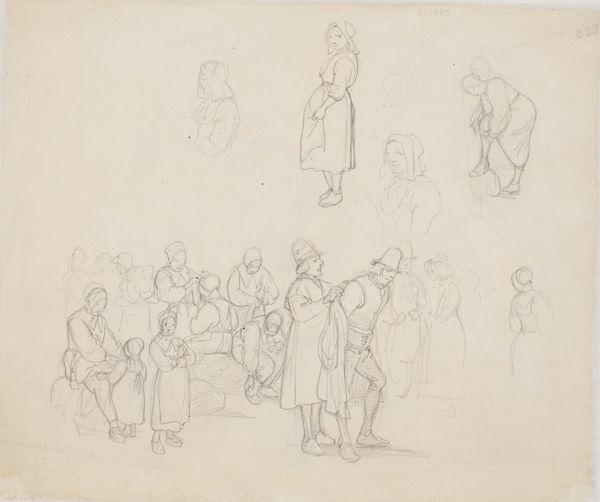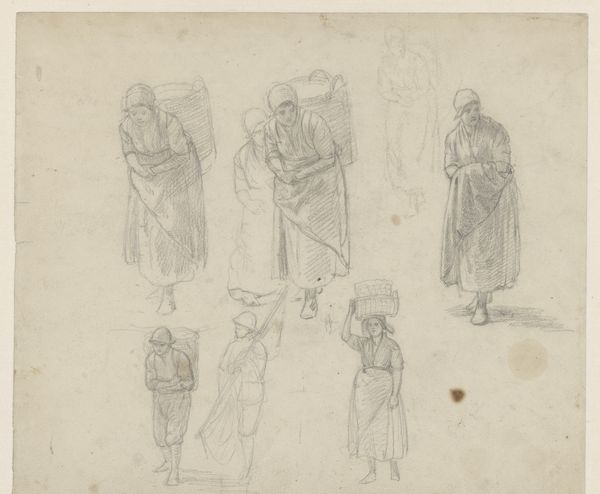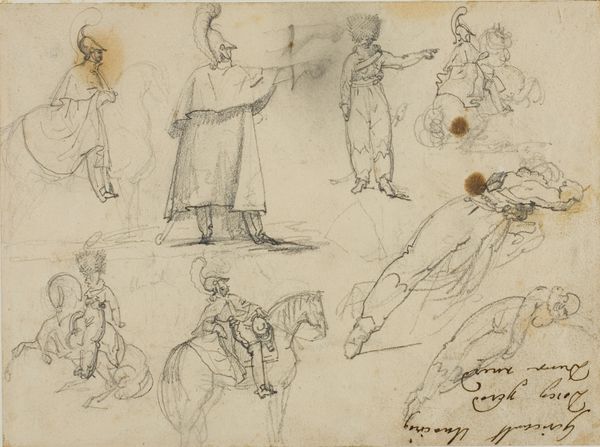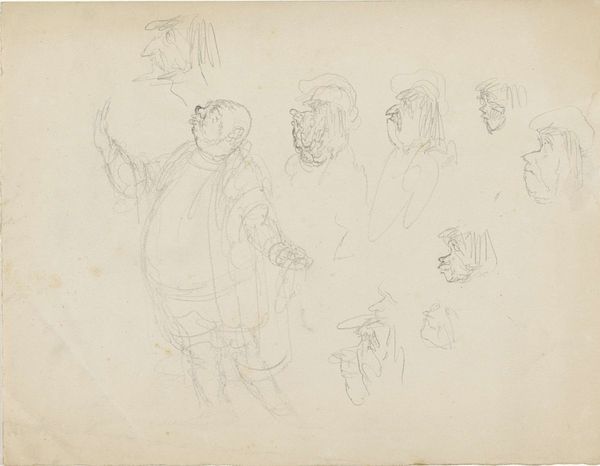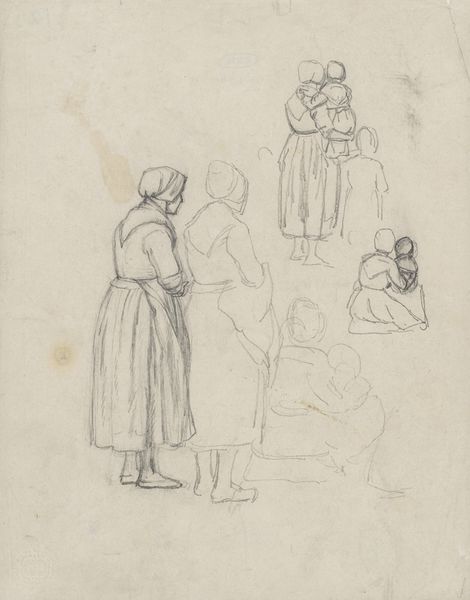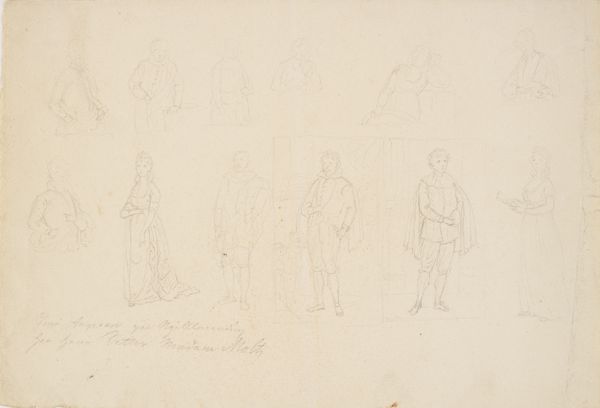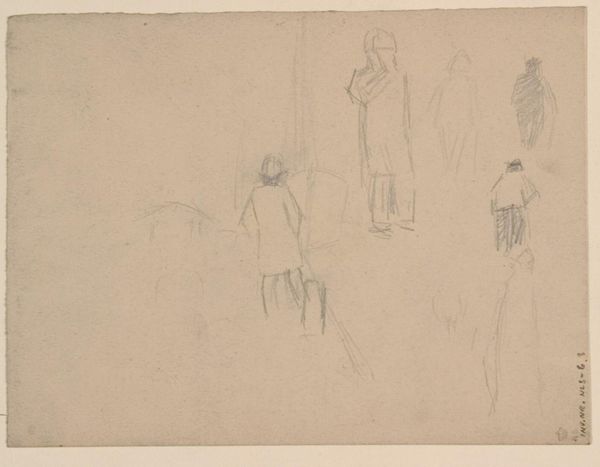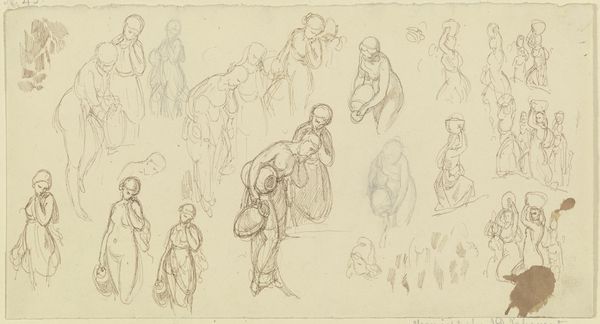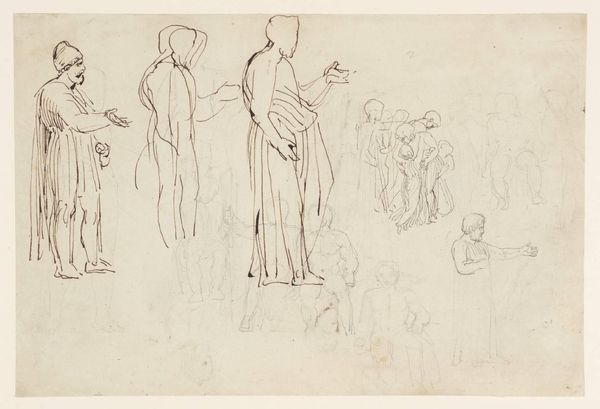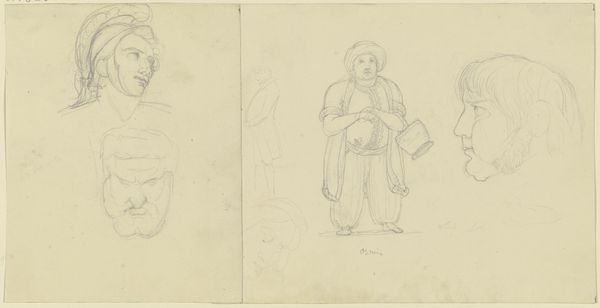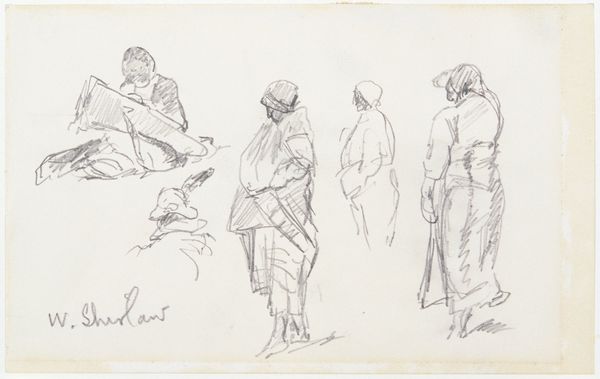
drawing, pencil
#
portrait
#
drawing
#
pencil sketch
#
figuration
#
pencil
#
genre-painting
Dimensions: 233 mm (height) x 324 mm (width) (bladmaal)
Editor: Here we have "Figurstudier, Dalarne," a pencil sketch by Wilhelm Marstrand, created in 1851. There’s something quite serene about this study, the figures are positioned as if caught in quiet moments. What strikes you most about its composition? Curator: Immediately, it is the deployment of line that captivates. Note how Marstrand varies its weight and density to define form and delineate space. The heavier lines sculpt the figure at the top, lending it a sculptural presence, while the ethereality of the others suggests transience, almost as though they could fade from the paper. Editor: That's interesting. So, you're focusing on the technical aspect, how the lines create different effects? Curator: Precisely. It is the interplay of these graphic elements that yields meaning. The composition is less about representation and more about the structural relations, the tensions and harmonies between solid form and ephemeral suggestion. Observe, for example, how the angles of the standing figure lead our eye across the image. Editor: Now that you point it out, I notice how the seated figure sort of anchors the composition, while the others seem to almost float around it. Does the positioning of figures indicate how he intends to convey their relationships? Curator: It could be suggested that relationships are secondary to the structure. Marstrand seems more interested in the visual rhythm – the contrast of solidity and dissolution, the play of light and shadow rendered through line. This arrangement guides our eye. Does it elicit a certain emotion, perhaps a reflective tranquility? Editor: Yes, it does! I think I appreciate now how much the artist's technique contributes to the overall impact of the work, beyond just depicting the figures themselves. Curator: Indeed. By examining the intrinsic visual language of the drawing, we discover its expressive power lies not just in *what* it depicts, but *how*.
Comments
No comments
Be the first to comment and join the conversation on the ultimate creative platform.

